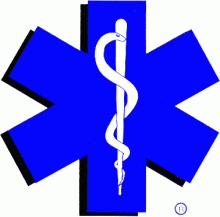EMS: History
Wisconsin EMS (Emergency Medical Services) was founded in 1968. Since then, it has evolved, offering more services and support for those who live in the state.
History of EMS in Wisconsin
EMS has followed this basic timeline:
- 1968—EMS was set up under the leadership of Joseph Salzmann. A group of dedicated staff managed all emergency medical technician training for the state. Training wasn’t required by law yet. Still, many ambulance staff completed the 81-hour Department of Transportation-approved course.
- 1969—The first nationally recognized training course for emergency medical technicians was held in Wausau, Wisconsin. It served as a test site for the new Department of Transportation curriculum. The physician coordinator, Joseph D. Deke Farrington, was an EMS pioneer from Minocqua. Among his accomplishments, he:
- Encouraged many doctors to get involved in EMS.
- Invented the spine board.
- Promoted the use of extrication.
- Was in charge of the first 81-hour curriculum (developed by Dunlap & Associates).
- 1974—Wisconsin law began requiring EMS training.
- 1992—A Wisconsin Legislative Council Special Committee was formed to review EMS. This happened after a report from the National Highway Transportation Safety Administration. The report outlined areas for Wisconsin EMS to improve. The findings led to legal actions and new staff for the state’s EMS system.
- 1993–1994—The legislative session in 1992 resulted in:
- The EMS Board.
- The EMS Physician Advisory Committee.
- The State EMS Medical Director.
- 2012—The National Highway Transportation Safety Administration did a follow-up review of Wisconsin EMS. View A Reassessment of EMS (PDF).
- Now—EMS helps improve prehospital care in Wisconsin. The work involves finding and using new types of care, more approved treatments, and medicines at different levels of care.
The EMS symbol
EMS uses the blue “Star of Life” symbol. It was designed for the National Highway Transportation Safety Administration. It serves as a common symbol that represents the EMS system.
The star includes the Staff of Asclepius. It represents medicine and healing. The six ends of the star relate to the six EMS system functions:
- Detection
- Reporting
- Response
- On-scene care
- Care in transit
- Transfer to definitive care
Though some restrictions apply, you can use this symbol for EMS purposes.

